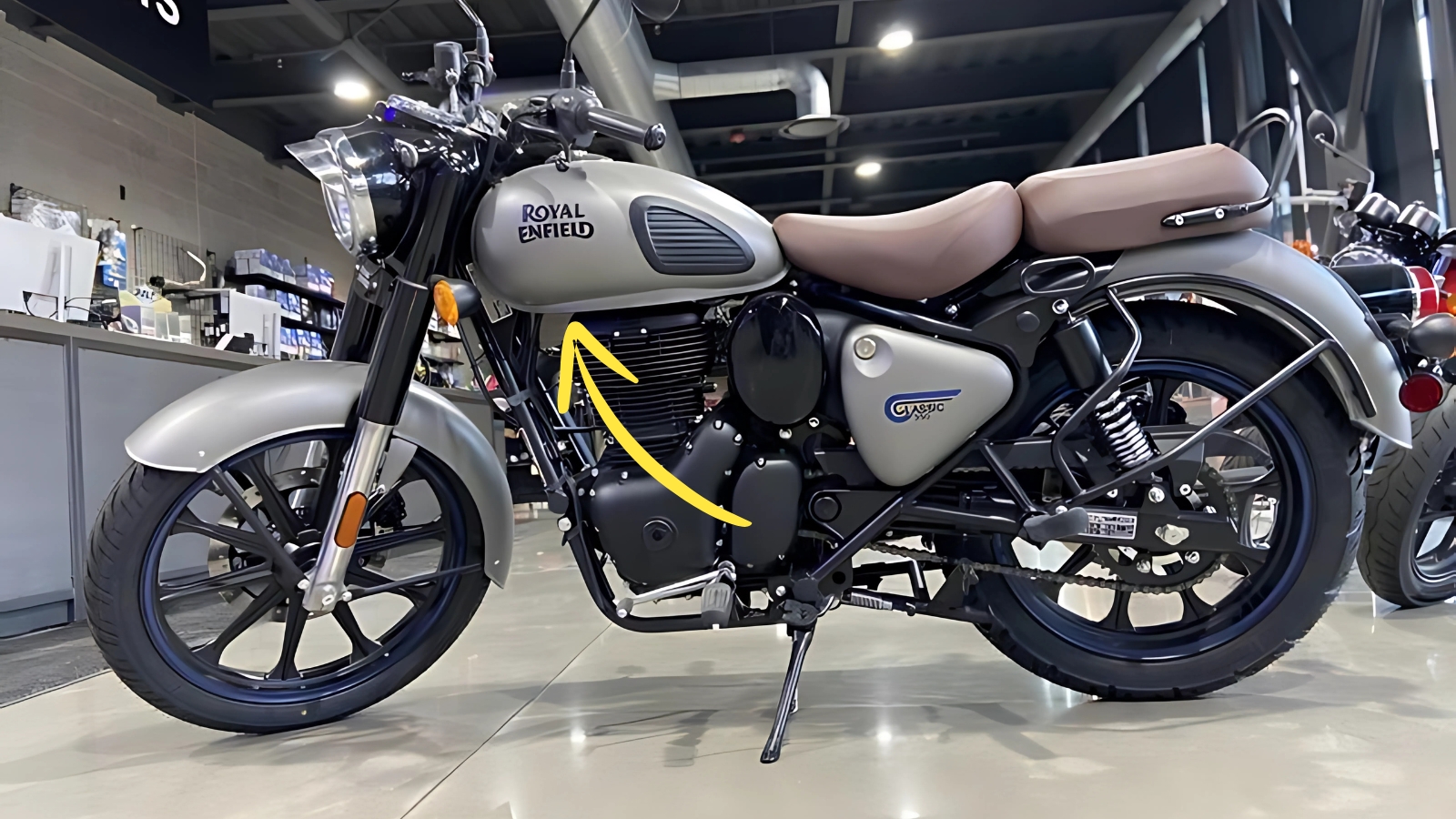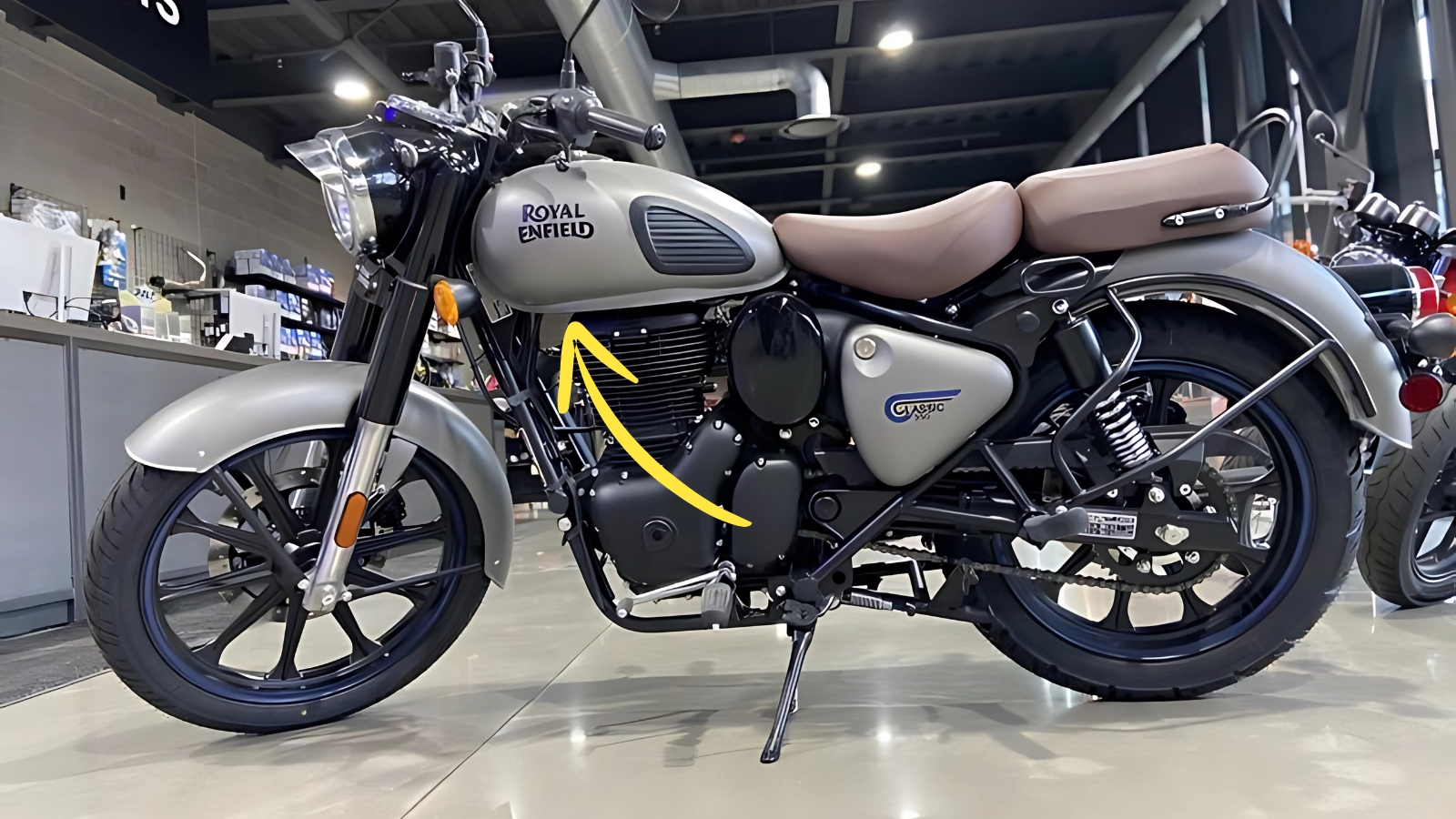Royal Enfield Classic 350: It was nothing new to hear ‘thump’, ‘chrome’ and ‘timeless style, there comes a name that directly hits the equilibrium-Royal Enfield Classic 350.
In India and abroad, for numerous motorcycle lovers the Classic 350 is not just a motorcycle; it’s an emotion, a statement, and a way of life.
Its unmistakable, retro looks, deep exhaust note and rich heritage have conspired to see it attract a cult following few bikes can hope to match.
When the new-generation Classic 350 was introduced, Royal Enfield didn’t just upgrade the motorcycle, they reimagined it, all the while, keeping one foot firmly grounded.
The second-gen Classic has a spanking-new engine and modern underpinnings and benefits from greater refinement and a nicer ride. But it still has the old soul that made the original so historic.
It’s this very model that we get to read more of in this story and see, to what extent in its new avatar does the Classic 350 offer more, and if the bike is still as charming in the increasingly crowded motorcycle space.
A Refinement on a Classic Design
The Classic 350 carries similar design aesthetic from back when it was first launched. It still gets the same tear-drop fuel tank, round headlamp and retro fenders, and metal bodywork.
But on further examination, you see small tweaks which signal better construction quality and a modern update.
The lines are crisper, paint quality is better and the detailing is more precise. Royal Enfield now features a variety of color schemes—from classic chrome to stealth black, and even the new matte Halcyon Green or Gunmetal Grey.
And the company has added new flavors, so to speak, with a variety of themes and finishes to serve a wide array of personal tastes.
Spoked wheels are still the order of the day on most iterations, though alloy wheels shod in tubeless rubber are now an option on some versions. All in, it’s an evolution in style more than a revolution — and that’s precisely what Classic fans are looking for.
Engine and Performance: The New J-Series Heart
The most significant change in the new Classic 350 is the one hidden beneath its skin. It is powered by the same 349cc, single-cylinder, air-oil cooled J-series engine that also propels the Meteor 350.
This engine is a far cry from the UCE (Unit Construction Engine which was notorious for vibrations and mechanical harshness.
Here’s what you get with the new engine:
Power: 20.2 bhp @ 6100 rpm
Torque: 27 Nm @ 4000 rpm
Transmission: 5-speed gearbox
Thrust is smooth, linear, and relaxed. So the gears are light, and the clutch action is a lot better. The huge amounts of vibes that marred the original Classic have been virtually done away with, courtesy of a counter-balancer shaft.
Regardless of whether you are pottering through city traffic or cruising on the open highway, the motor is a lot more smoother and enjoyable.
The bike doesn’t pretend to be fast — and doesn’t want to be. Rather, it offers a smooth, torque-heavy ride for easygoing cruising.
Ride comfort, handling: Clearly a cushy cushy ride.
The frame is another huge upgrade. The Classic 350 now gets a double-downtube frame for improved stability and better ride quality.
The tuned front telescopic forks and twin rear shock absorbers deliver a smooth cushion even over bumpy road conditions, especially when cruising.
The seat padding is thicker and more concave, and long rides are far less painful than they used to be.
Commanding and relaxed The upright riding position, large handlebar and mid-set foot pegs deliver a ridin posture that is both comfortable and control-efficient.
Any cornering prowess isn’t really the Classic’s strong point, but it has the ability to turn in which lets the chassis down.
It’s not sporty, but it’s poised and polite, even on mildly twisty roads.
Braking and Safety
Braking is better now, too. The Classic 350 is equipped with disc brakes on both wheels (in the higher trims) and dual-channel ABS for safer braking especially when applied while in a hurry.
Lower models get single-channel ABS in combination with rear drum kit.
The bite on the front brake is good but the rear is relatively progressive. Combined, they offer better stopping power than the previous-gen car.

Instrumentation and Features
True to its retro theme, the Classic 350’s speedometer is still round and analogue—only with a side-mounted digital readout that displays:
Trip meters
Fuel gauge
Clock
Eco indicator
Some models are also fitted with Royal Enfield’s Tripper Navigation system, which connects to your smartphone via Bluetooth and provides turn-by-turn navigation — a much appreciated modern touch in a vintage environment.
And while the bike isn’t exactly dripping in tech, it does feel more well-rounded and user-friendly for both your daily commuter and tourer.
Royal Enfield claims anywhere between 35–38 km/l, but actual fuel consumption may vary between 30–35 km/l as per riding style and traffic condition.
These are good figures for a 195-odd kg, 350cc motorcycle.
Fuel tank is 13 litres in size which should return close to 400 km on a full tank – perfect for riding on weekends and short journeys.
Brand Loyalty-Based on Potential for Owning a Nissan
The high degree of loyalty towards the brand is one of the most significant contributing factors to the Classic 350’s success.
Owners frequently create riding clubs, go on long hauls, and pay homage to the retro appeal of their machines.
Royal Enfield has done a good job of building a lifestyle brand around its motorcycles, one that very few companies at this price point can match.
Over the years, the company has also become a lot better in terms of service network and after-sales support.
Cost of maintenance is quite reasonable and spare parts of these vehicles are easily available throughout India, even in the remotest of regions.
Pros of Royal Enfield Classic 350
Here are the positives of the motorcycle
Classic design reinvented with perfection in mind
Great running J-series motor that has never been raced
Ergonomically eased riding position and pliant suspension.
Superior braking hardware with dual-channel ABS
Quality after market and accessories available
Good resale value and community of brand owners
Drawbacks of Royal Enfield Classic 350
Heavier than almost all of the rivals (just short on 195 kg)
Stability or grip leaves much to be desired if you regularly ride fast or aggressively
Average fuel economy for the segment
Fewer tech features than newer rivals
Rear seats should have been more spacious for long pillion rides
Royal Enfield Classic 350: Concludes: A Modern Classic that Hasn’t Lost Its Soul
The Royal Enfield Classic 350 is still a one-of-a-kind offering in the spectrum of Indian motorcycles. It’s not going for straight-up speed, gadgets or just plain modernity.
Instead, it serves up a form of riding which is based on emotion, character and timeless appeal.
And with this new generation, Royal Enfield has licked near enough all the pain points of its predecessor—the shakes, terrible brakes and outdated ride—yet retains the soul of the Classic.
Whether you’re an upgrading cruiser customer or a first-time cruiser buyer, the new Classic 350 will appeal to you with the welcoming arms and the thumping heartbeat.
It is not a mere machine, it’s a two-wheeled experience. For those who like it large, go ride a 650 cruiser, oh and we have got an ADV to ride to Bangalore!”
Without a shred of doubt, the Classic 350 is still the motorcycle for those who hate all of that unnecessary drama!

